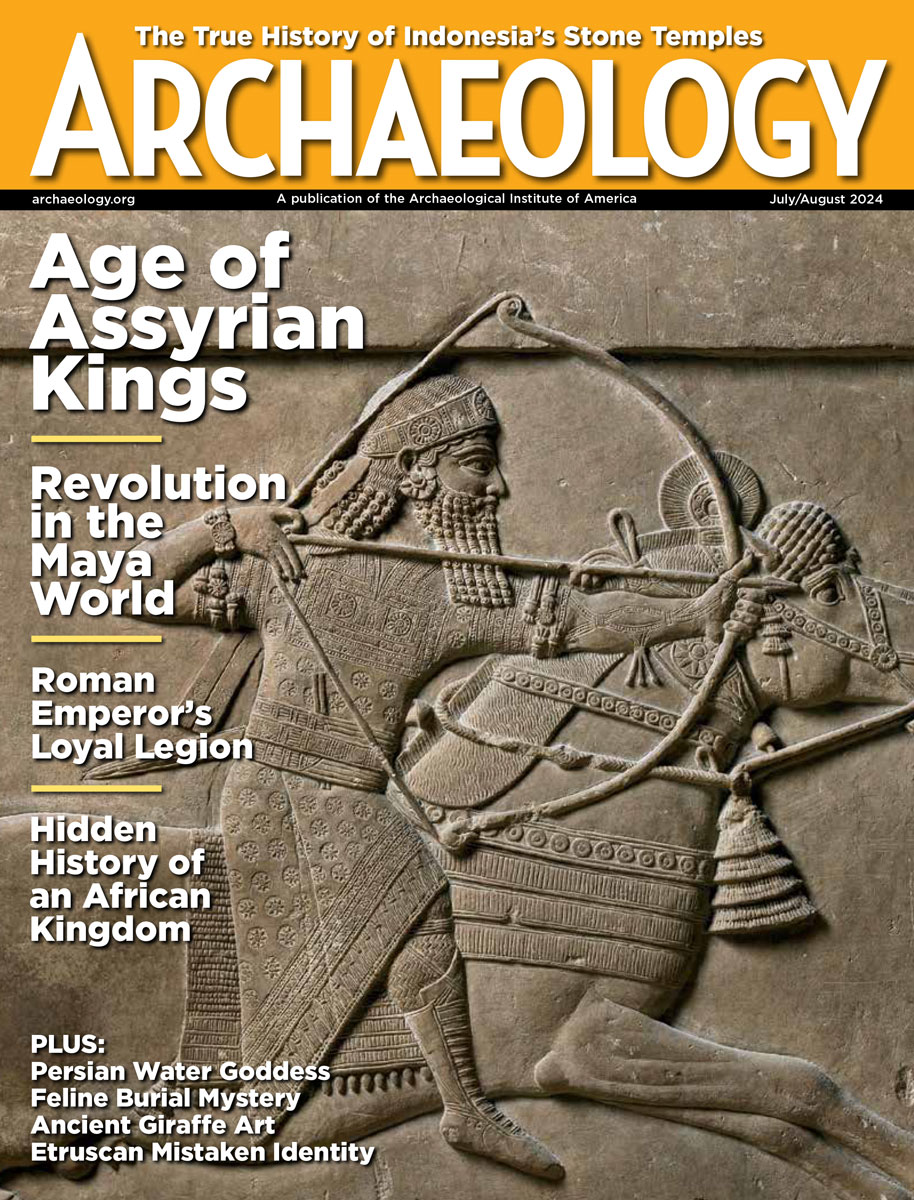Friday, March 28
March 28, 2008
Lumps of black manganese pigment crafted into drawing implements indicate that Neanderthals communicated, and imply that they could speak, according to Francesco d’Errico of the University of Bordeaux. Such drawing tools have been found at 39 Neanderthal sites across Europe.
Examination of the skeletons from Akhenaten’s city, Tell el-Amarna, shows that ordinary Egyptians suffered from anemia, bone fractures, stunted growth, and high juvenile mortality rates. Art from the period suggests, however, that the people enjoyed wealth and abundance. “We are seeing a more realistic picture of what life was like,” said Barry Kemp, director of the Amarna Project. Â
The remains of three known relatives of German poet Friedrich Schiller were exhumed in order to obtain DNA samples. Scientists will try to determine if either of two skulls said to belong to Schiller, who had been buried in a mass grave in 1805, is really his. Â
At a conference in Paris last month, museum officials gathered to discuss the repatriation of human remains, and “confront skeletons in the closet.” The meeting was prompted by a recent case, in which the French government prevented a museum in Rouen from returning a tattooed Maori skull to New Zealand. Â
Russia will return six stained-glass windows taken by Soviet troops from a church in Germany during World War II. Six years ago, 111 windows, which had been stored in the Hermitage, were returned. The remaining six panels were recently discovered at the Pushkin Museum.  Â
Scientists from the Lawrence Berkeley National Laboratory have played back a phonautograph  made in 1860. (A phonoautograph is a visual recording of sound.) “This is a historic find, the earliest known recording of sound,” commented Samuel Brylawski, former head of the recorded-sound division of the Library of Congress.
- Comments Off on Friday, March 28
Thursday, March 27
March 27, 2008
A jawbone and teeth dating between 1.1 and 1.2 million years ago were discovered at Sima del Elefante, in Spain’s Atapuerca region. “It is the oldest human fossil yet found in Western Europe,” said Jose Maria Bermudez de Castro of Spain’s National Research Center on Human Evolution.Â
DNA studies of two lion skulls from the medieval Tower of London Zoo indicate that the beasts were male North African Barbary lions, which are now extinct. Â
In Bangladesh, the twelfth-century Shiva Temple of Bholahat is covered in cow dung and a tree is growing out of its roof. Badrul Alam, a field officer for the government’s archaeology department, is encouraging locals to demand its preservation. Â
Using funding from the Ir David Foundation, an Israeli settler group, the Israel Antiquities Authority is excavating beneath Silwan, an Arab neighborhood in annexed east Jerusalem. “They need the money, and they are not just doing this for the benefit of archaeology,” commented Yoni Mizrachi, an Israeli archaeologist. “It’s one of the few sites operated by private organizations and it is the only one run by a right-wing organization,” he added. Residents of the neighborhood are not allowed to view the work. Â
Here’s another article with more information on Ohio State University’s decision to return some 600 sets of human remains excavated in the 1960s to West Virginia. Â
Canada’s First Nations are using the legal system to protect archaeological sites and the landscape in which they sit. “Virtually all of the First Nations’ 9,000-year-old footprint in southwestern British Columbia has been eradicated by development,” said archaeology graduate student Michael Klassen. “Most of it has been destroyed lot by lot, because each property taken alone may not register as scientifically significant.” Â
Don’t let the ridiculous “Ancient Petroglyph May be Key to Christmas Legend” title of this article turn you away. This story is really about the damage done to Utah’s rock art in Nine Mile Canyon by the gas and oil industries. Â
Development threatens Ypres, Belgium, where World War I battles raged for four years. Â
The Easter Island Moai in this photograph is missing an earlobe, thanks to a greedy tourist.
- Comments Off on Thursday, March 27









